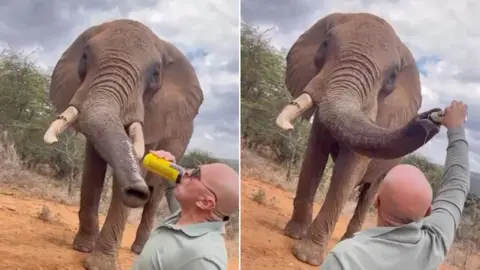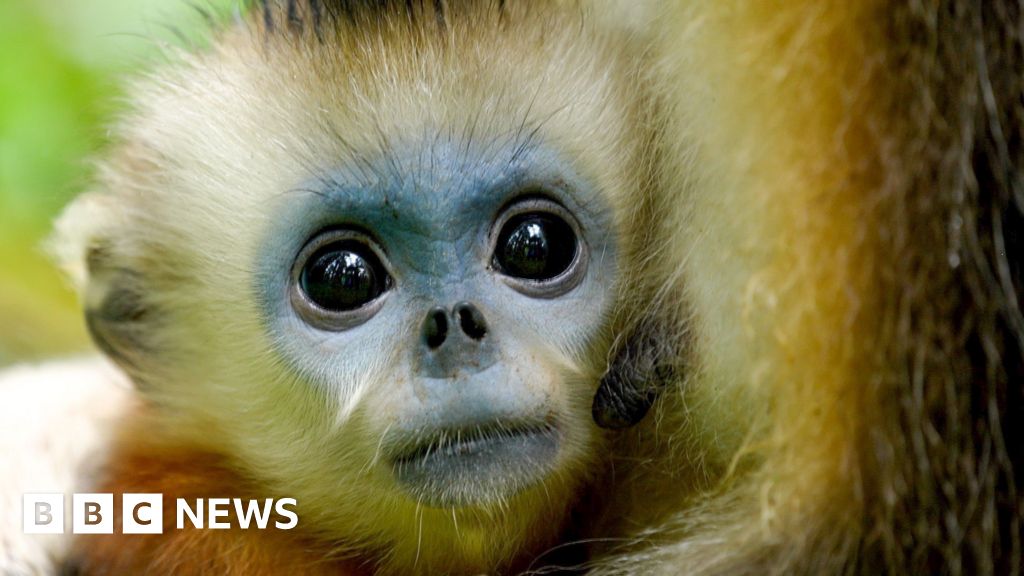The battle against rhino poaching in South Africa has taken a revolutionary turn with the launch of the Rhisotope Project by scientists from the University of the Witwatersrand. This innovative initiative involves injecting rhino horns with harmless radioactive material, which will assist customs officials in identifying illegally smuggled horns worldwide. With South Africa being home to the largest rhino population, the urgency of this endeavor is underscored by the alarming rate of poaching, which sees hundreds of rhinos fall victim to poachers annually.
Professor James Larkin, a key figure in the project, emphasized the dire circumstances, noting that at least one rhino is poached every day. He expressed hope that this proactive approach would significantly curtail poaching activities, stating, "This is a significant tool to help reduce the numbers of poaching." After six years of research and a pilot study involving 20 rhinos confirmed the safety of the radioactive treatment, the project received substantial backing, costing approximately £220,000 (around $290,000).
Jamie Joseph, a prominent campaigner for rhino conservation, praised the Rhisotope Project for its innovative approach, recognizing that while it is certainly a step forward, it must be complemented with stronger legislation and political commitment to effectively address the rhino crisis. She highlighted the project's potential to disrupt the illegal horn trade, especially as data from the initiative can shed light on trafficking routes.
Beyond ensuring the safety of the rhinos, the Rhisotope technology can be used to detect horns even within large shipping containers, making it a game-changer in anti-poaching strategies. Jessica Babich, who heads the Rhisotope Project, conveyed her ambition to deploy this technology on a larger scale to protect Africa's iconic rhinos and preserve a vital aspect of natural heritage.
With poaching rates consistently exceeding 400 rhinos per year since 2021, stakeholders including conservation charities like Save the Rhino are hopeful that technological innovations like the Rhisotope Project will redefine the battle against wildlife crime. The fate of both the white and critically endangered black rhinos may very well hinge on these modern anti-poaching efforts.
Professor James Larkin, a key figure in the project, emphasized the dire circumstances, noting that at least one rhino is poached every day. He expressed hope that this proactive approach would significantly curtail poaching activities, stating, "This is a significant tool to help reduce the numbers of poaching." After six years of research and a pilot study involving 20 rhinos confirmed the safety of the radioactive treatment, the project received substantial backing, costing approximately £220,000 (around $290,000).
Jamie Joseph, a prominent campaigner for rhino conservation, praised the Rhisotope Project for its innovative approach, recognizing that while it is certainly a step forward, it must be complemented with stronger legislation and political commitment to effectively address the rhino crisis. She highlighted the project's potential to disrupt the illegal horn trade, especially as data from the initiative can shed light on trafficking routes.
Beyond ensuring the safety of the rhinos, the Rhisotope technology can be used to detect horns even within large shipping containers, making it a game-changer in anti-poaching strategies. Jessica Babich, who heads the Rhisotope Project, conveyed her ambition to deploy this technology on a larger scale to protect Africa's iconic rhinos and preserve a vital aspect of natural heritage.
With poaching rates consistently exceeding 400 rhinos per year since 2021, stakeholders including conservation charities like Save the Rhino are hopeful that technological innovations like the Rhisotope Project will redefine the battle against wildlife crime. The fate of both the white and critically endangered black rhinos may very well hinge on these modern anti-poaching efforts.


















